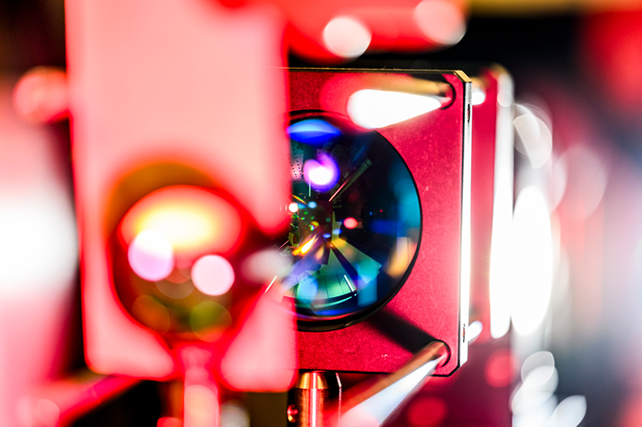Your days of being frustrated by a sluggish smartphone or laptop could be coming to an end: scientists have discovered a new technique for controlling electronic states in quantum materials that could eventually make our gadgets up to 1,000 times faster.
Quantum materials are those that display strange behaviors and properties governed by quantum mechanics. They provide a glimpse into a separate realm of physics, where the standard laws don't apply.
Here, researchers from institutions across the US manipulated the temperature of a layered quantum material called 1T-TaS₂, enabling it to instantly shift between two opposite electronic phases: insulation and conduction. That ability to block or allow the flow of electricity is key to how transistors in computer chips work.
Of course it's a long journey from a physics lab to consumer electronics, but the technology has the potential to transform the clock speeds of the processors in our gadgets – essentially, how quickly they run.
Related: Microsoft Claims a Major Quantum Breakthrough, But What Does It Do?
"Everyone who has ever used a computer encounters a point where they wish something would load faster," says physicist Gregory Fiete, from Northeastern University.
"There's nothing faster than light, and we're using light to control material properties at essentially the fastest possible speed that's allowed by physics."
Every electronic device requires both conductive and insulating materials, which then need to be linked together. If this technology can be developed, we'll have a smaller, faster, single material that can be controlled by light to switch between the two states.

The researchers call their process "thermal quenching". The material 1T-TaS₂ has previously shown promise in switching between a conductor and an insulator, but the breakthrough here is doing so at more practical temperatures, rather than cryogenic ones, and for months at a time rather than seconds.
Key to those improvements were the heating and cooling approach used by the researchers, and the timing of the temperature changes: fast enough to be effective, but not so fast that the necessary quantum states collapse.
"One of the grand challenges is, how do you control material properties at will?" says Fiete. "What we're shooting for is the highest level of control over material properties. We want it to do something very fast, with a very certain outcome, because that's the sort of thing that can be then exploited in a device."
Silicon semiconductor components have of course served us well for decades, but we're now approaching the physical limits of what these chips can offer. As such, manufacturers are looking for alternative options.

While the techniques used with 1T-TaS₂ here are nowhere near ready to stuff inside our gadgets right now, they do open potential paths towards different types of components and different approaches to electronics that can provide serious performance jumps in the years to come.
"We're at a point where in order to get amazing enhancements in information storage or the speed of operation, we need a new paradigm," says Fiete.
"Quantum computing is one route for handling this, and another is to innovate in materials. That's what this work is really about."
The research has been published in Nature Physics.
